Schier Dairy Equipment Company
Butter: How It’s Made
We have all seen pictures of butter churns from the 1800s; with the long sticks in a tub pounding the cream up and down until it separates. Have you ever wondered how butter is made today, in the 21st century?
Pasteurization
Before you buy that golden brick of creamy goodness from the store, butter starts where all dairy products begin; in the cow. Once a cow is milked, the raw milk is tested to make sure it has a consistent color and smell, so that all of the butter is quality controlled. From there it gets pasteurized by heating it to 161º F, and then cooling it quickly. This kills any unwanted bacteria making the milk safe to consume and use. The process creates the whole milk that can be bought in the store. It has a 3.25% fat content and can either be sold as is, or turned into the many milk byproducts we find in the store like cheese, cream, yogurt, and even butter!
Separation
It is then pumped into a machine called a separator. In the past, milk was left out for days while the cream naturally separated from the liquid through sedimentation. A milk separator speeds up that process exponentially by spinning quickly until the raw milk separates into fat and liquid. The more dense fat sinks to the bottom of the separator and the thinner liquid floats to the top.
The fat is called butter cream or butter fat and that byproduct is what is turned into butter! This butter cream is about 38% fat and the rest of the liquid is skimmed milk. Some of the butter fat can be added back to the skim milk to make the 1% and 2% milks you buy in the store! The butter cream, on the other hand, will go through several processes that squeeze out the excess liquid and leave more and more fat behind. The final stick of butter will be about 80% fat and the byproducts squeezed out along the way will be used for many different dairy products that you can find at your store.
Culturing
After the cream is separated from the milk, the cream can be cultured. To culture the cream, it is pumped into a tank where good bacteria is added back into the cream. This process ferments it over time and adds natural probiotics to the cream. The timing of this step is key, as too much time can turn the cream into cheese! Cultured butter can be a very healthy addition to diets as it is rich in probiotics, which aid with digestive health.
Churning
From there, the butter cream is put into a machine called a butter churn. The butter churn does just what the name suggests: it churns butter! This large machine looks and acts similar to a clothes dryer. The butter cream is turned and agitated like clothes in a dryer, until the molecules in the cream burst and the semi solid molecules (butter fat) are separated from the thinner liquids (butter milk). The butter fat molecules cling together until they become small masses, often referred to as popcorn butter or butter grains because of their size. Once the popcorn butter has formed, the butter milk is drained out of the churn and either bottled or used to make ice cream or other byproducts.
Shaping and Packaging
A butter mill works the butter, getting it ready for forming and packaging. Believe it or not, butter can be packaged in many different ways, even within the United States! Restaurants and bakeries who use a lot of butter may prefer butter to be sold in larger packages, with some blocks weighing over 50 pounds! In grocery stores in the eastern United States, you will find butter sold in sets of four long rectangular prism shaped sticks, one-quarter of a pound each. These are called “Elgin” shaped, named after the town where the shape was invented. The west cost sells butter that is a bit stubbier than its east coast counterpart, but each stick is still one-quarter of a pound each. Butter can also be sold in tubs. All that said, there are many different sizes and styles of packaging machines, but they all do virtually the same thing. Butter is pushed out of a mould and into the waiting wrapper paper. The wrapper is closed by machine and pushed on to be further packaged and shipped to stores.
Whether butter is being made in small batches or large industrial quantities, it is fascinating to see how the butter making process leaves no waste. Each of the byproducts, like skim milk, buttermilk, and whey can all be used to create other dairy products.
Whether you are just starting out, looking to expand, or ready to replace some old equipment, here at Schier company, we can provide you with whatever products you need to begin, sustain, or enhance your dairy business. We carry a large range of new and used industrial dairy processing equipment, like those mentioned in this article. All of our machines, whether new or used, are inspected to ensure the highest quality and efficiency. Our used equipment is refurbished and guaranteed to be long-lasting and reliable. For more information about our services and products, give us a call at 918-321-3151 and we would be happy to assist you so that you can continue churning out butter!
“The staff at Schier Company is absolutely amazing! They are friendly and very knowledgeable when it comes to finding used dairy equipment”
John Wilkins – A&E Equipment
